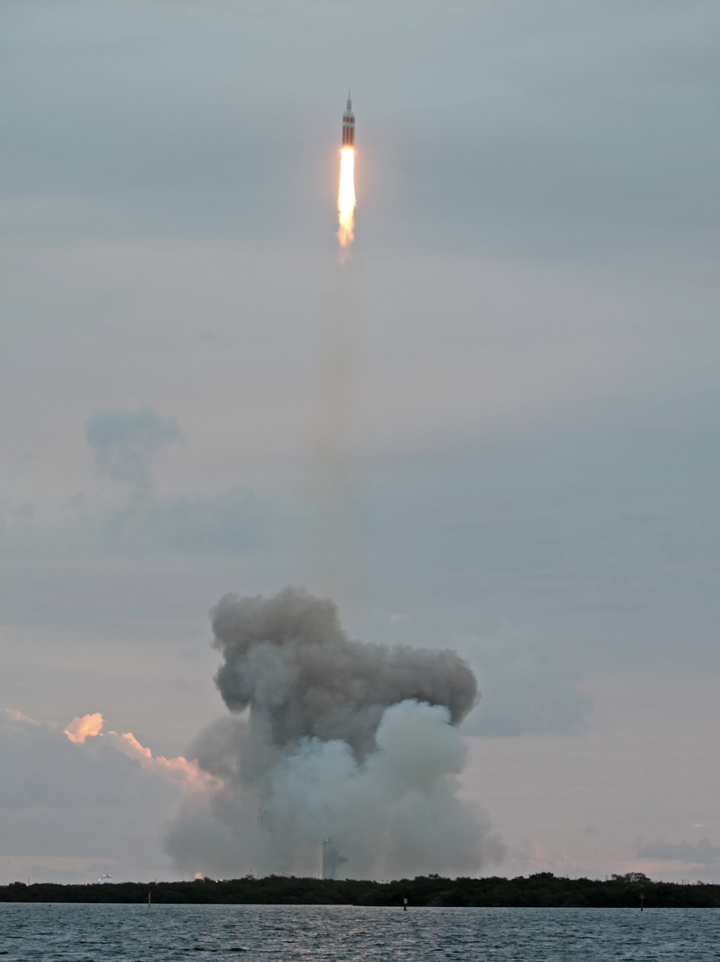WATCH: We are now a step closer to sending people into deep space. NASA’s new Orion spacecraft passed its maiden test flight with flying colours. As Aarti Pole reports, the next stop is Mars.

CAPE CANAVERAL, Fla. – “There’s your new spacecraft, America.”
With those words, NASA’s mission control commentator Rob Navias introduced the country — and the world — to Orion, the spacecraft that will send humans to Mars.
Four hours and 24 minutes into its first test flight, Orion safely splashed down in the Pacific Ocean off the coast of Baja California after completing a “flawless” first test flight.
READ MORE: Peek inside NASA’s largest building, and home to the newest spaceship
“There was no issue of any significance through the program’s milestones,” Navias said about an hour after splashdown.
William Gerstenmaier, associate administrator for Human Exploration and Operations, thanked everyone involved in the successful flight.
“That got me excited again about spaceflight,” he said at a post-launch briefing.
Mike Hawes, Lockheed Martin Orion Program manager, became visibly choked up as he praised the mission.
“Bill and I have been at this a long time together,” he said, his voice cracking as he looked at Gerstenmeier.
“When we started at KSC it was with all the Apollo guys there. So we’ve kinda now finally done something for our generation. It’s a good thing.”
Though there was just a 40 per cent chance of launch on Friday, United Launch Alliance’s Delta Heavy IV rocket successfully delivered NASA’s next generation of a deep-space crew module into space, lifting off at 7:05 a.m. right on schedule.
The goal of this mission was to test several key systems on the Orion spacecraft — built by Lockheed Martin — including the launch abort system, guidance, heat shield as well as the effects of radiation on the ship’s computer systems. There were more than 1200 sensors aboard.
Some of the computers did indeed reset, Hawes said, but that was not unexpected. The computers are programmed to do that in the case of high radiation.
As well as sensors, flags, moon dust and other memorabilia made the flight in the capsule that lacked seats — and human cargo.
During its flight, Orion reached an altitude of 5,800 km from Earth. That is the farthest any spacecraft designed for humans has flown since 1972 in the last flight of the Apollo mission.
Mark Geyer, NASA’s Orion program manager said that the video feed of Earth as seen from the inside of the Orion capsule mean a lot for him.
“What I liked was the view of the window. You can see the frame of the window so you feel like an astronaut yourself.”
Out in the Pacific Ocean, about 966 km off the coast of Baja California, crews began recovery efforts of the capsule, but an hour after it splashed down. Geyer explained that the reason was to observe how it dealt with cooling after it reached temperatures of 2,200 C.
Orion will travel back to Kennedy Space Center aboard a truck. It is expected to arrive by Christmas. Until then, scientists and engineers will continue to gather data from its 1200 sensors.


Comments